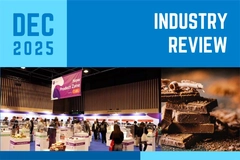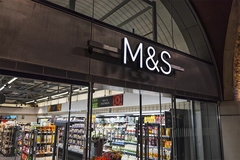
- Industry news
Industry news
- Category news
Category news
- Reports
- Key trends
- Multimedia
- Journal
- Events
- Suppliers
- Home
- Industry news
Industry news
- Category news
Category news
- Reports
- Key trends
- Multimedia
- Events
- Suppliers
Kraft Foods Reports Strong 2008

2008 net revenues increased 16.8% to $42.2 billion; organic net revenues grew 6.6%, 2008 diluted EPS $1.92; EPS excluding items $1.88, in line with company guidance. Q4 net revenues increased 6.2% to $10.8 billion; organic net revenues grew 4.4%, Q4 diluted EPS $0.11; EPS excluding items $0.43 versus $0.44 a year ago. 2009 GAAP EPS guidance $1.88, from at least $2.00, due to currency.

05/02/09 Kraft Foods Inc. reported 2008 results that reflected solid top-line and bottom-line results in the second year of its three-year turnaround plan. Strong organic net revenue growth was driven by pricing actions in response to higher input costs. Growth in operating income excluding items reflected the benefits of further investments in brand building and improved cost management. This, combined with improved working capital management, resulted in strong cash flow. As expected, fourth quarter reported earnings per share decreased largely due to the final costs related to the company's previously announced restructuring program.
"Despite a difficult environment in 2008, we delivered our commitments and made significant strides in staging the portfolio for sustainable growth," said Irene Rosenfeld, Chairman and CEO. "While our 2009 earnings face a number of headwinds, particularly currency and pension costs, we will complete our turnaround in 2009 by continuing to invest in our brands, better leveraging our overhead costs and improving both market shares and profit margins from 2008 levels."
Fourth quarter net revenues increased 6.2 percent to $10.8 billion. The LU biscuit acquisition added 8.0 percentage points to net revenue growth that was partly offset by a negative 5.3 percentage point impact from currency and a 0.9 percentage point impact from divestitures.
Excluding these factors, organic net revenue growth was 4.4 percent. Input cost-driven pricing added 9.8 percentage points to growth. Volume was down 5.2 percent reflecting the full impact of unprecedented cost-driven pricing actions taken throughout the year in every geography. Additionally, North American volumes were negatively impacted by retailer inventory reductions and the company's pruning of less profitable items.
Operating income: Fourth-quarter reported operating income declined 68.5 percent from the prior year to $302 million primarily due to the final costs related to the company's restructuring program, which was completed at the end of 2008. Operating income excluding items was down 0.8 percent versus the prior year. In fourth quarter 2008, approximately $170 million of unrealized, mark-to-market losses related to the company's commodity hedging activities affected results. Operating results improved as the benefits of the LU biscuit acquisition and cost-driven pricing actions more than offset the impacts of higher input costs, lower volume, higher marketing and the timing of overhead costs.
Kraft's reported tax provision in the fourth quarter 2008 was a credit of $90 million reflecting higher costs related to the company's restructuring program and the recognition of several specific tax benefits. Excluding items, the fourth quarter rate was 19.7 percent compared to 27.4 percent in fourth quarter 2007, primarily reflecting several discrete tax benefits recognized in fourth quarter 2008.
Fourth-quarter 2008 reported earnings per share were $0.11, down from $0.38 in fourth quarter 2007. During the quarter, the company incurred $0.36 per share in asset impairment, exit and implementation costs, compared to $0.06 in the same quarter a year ago, and recognized a $0.05 adjustment on the previously recognized gain from the split-off of the Post cereals business.
Excluding items, fourth-quarter 2008 earnings per share were $0.43, down 2.3% from fourth quarter 2007. Compared to the prior year, earnings per share excluding items reflected a $0.11 contribution from operational gains, a $0.02 contribution from lower shares outstanding, and a $0.04 benefit from a lower effective tax rate. These gains were offset by $0.08 in unrealized, mark-to-market losses from certain commodity hedging activities, a $0.04 negative impact from higher interest expense, a $0.03 negative impact from currency, and a $0.03 decline in earnings from discontinued operations.
The company generated $2.8 billion in discretionary cash flow during 2008, defined as cash flow from operations less capital expenditures. This represents an increase of 19 percent compared to 2007, driven by solid earnings performance and significant improvements in working capital management.
In 2008, the company repurchased 25.3 million shares of its common stock for approximately $777 million. The company repurchased no shares in fourth quarter 2008 in light of uncertain conditions in the economy and capital markets. Given the present environment, the company does not expect to make further share repurchases before its current authorization expires on March 30, 2009.
In US Beverages organic net revenues declined 1.7 percent as pricing was offset by unfavorable product mix and lower volumes, primarily in powdered beverages. Successful quality and marketing investments in Capri Sun led to solid ready-to-drink beverage growth. In coffee, continued gains in Maxwell House mainstream coffee and Tassimo on-demand coffees were offset by declines in premium coffee brands. Crystal Light powdered beverage revenue was down significantly due to a combination of retailer inventory reductions and comparisons with an exceptionally strong prior year period. Operating income excluding items declined 49.3 percent as the benefits of higher pricing and productivity were more than offset by the negative product mix from lower powdered beverage revenues as well as higher marketing spending.
Organic net revenues for US cheese grew 3.3 percent reflecting the impact of cost-driven pricing actions taken throughout the year and the associated decline in volume. Operating income excluding items more than doubled versus a weak fourth quarter in the prior year as the company better aligned pricing with input costs. During the quarter, pricing more than offset the impact of lower volume and unfavorable product mix as the benefits of past pricing actions caught up to the escalation of costs experienced during the year.
For U.S. Convenient Meals organic net revenues grew 10.7 percent reflecting cost-driven price increases and favorable product mix. The main contributors of revenue growth were DiGiorno and California Pizza Kitchen pizzas, including the launch of the "For One" line of individual size pizzas, as well as Oscar Mayer bacon and Oscar Mayer Deli Fresh meats. Operating income excluding items increased 25.3 percent as the benefits of past pricing actions caught up to the escalation of costs experienced during the year.
For U.S. Grocery organic net revenues grew 2.0 percent due to cost-driven pricing and favorable product mix. Further growth in Kraft macaroni and cheese dinners was partially offset by the impact to volume from cost-driven price increases and retail inventory reductions, particularly in pourable and spoonable dressings. Operating income excluding items declined 6.8 percent as lower volume was partially offset by improved pricing net of input costs.
For U.S. Snacks Organic net revenues declined 1.2 percent as pricing was more than offset by lower volume and unfavorable product mix. Volume declined significantly in Planters snack nuts as price gaps versus competition widened due to earlier pricing actions taken by the company that were not matched by competitors. Biscuit growth was driven primarily by gains in cookies, including strong momentum in Oreo, which grew more than 20 percent in the quarter. Operating income excluding items declined 9.5 percent as profit growth in biscuits was more than offset by a decline in snack nuts and snack bars.
For Canada & North America Foodservice organic net revenues grew 2.0 percent behind cost-driven pricing and favorable product mix. Volume growth from improved customer programs in Canada was more than offset by lower Foodservice volumes due to a slowdown in casual dining traffic and the pruning of lower-margin businesses. Operating income excluding items declined 9.8 percent due to unfavorable currency. Apart from the impact of currency, the benefits of cost-driven pricing and lower overhead costs more than offset higher input costs and lower volume.
European Union organic net revenues grew 2.3 percent reflecting cost-driven pricing actions that more than offset a pricing-related volume decline. Further investments in marketing and innovation behind the Milka brand drove solid growth in chocolate, with particular strength in Germany, Austria and Poland. Successful investments in the Philadelphia brand partially offset pricing-related base cheese declines. Coffee gains were driven by continued growth of Tassimo on-demand coffees, a successful relaunch of Kenco in the United Kingdom and improved marketing behind Gevalia in Sweden. Operating income excluding items grew 25.3 percent, including a 42.4 percentage point contribution from the acquisition of the LU biscuit business. Overall, the benefits of the acquisition, higher pricing and favorable product mix were partially offset by higher input costs, the timing of overhead costs, pricing-related volume declines and unfavorable currency.
In Developing Markets organic net revenues grew 15.3 percent driven by strong results in every region. Successful investments in chocolate and coffee drove revenue growth across all key markets in the Eastern Europe, Middle East & Africa region. Latin American growth was driven by pricing gains in biscuits and chocolate. Revenues in the Asia Pacific region grew due to gains in biscuits as well as improved consumer programming behind Toblerone chocolates and Tang powdered beverages. Operating income excluding items increased 29.6 percent, including a 1.7 percentage point benefit from the acquisition of the LU biscuit business. The primary drivers of the strong increase in operating income in the quarter were pricing and favorable product mix that more than offset higher input costs and the timing of overhead costs.










